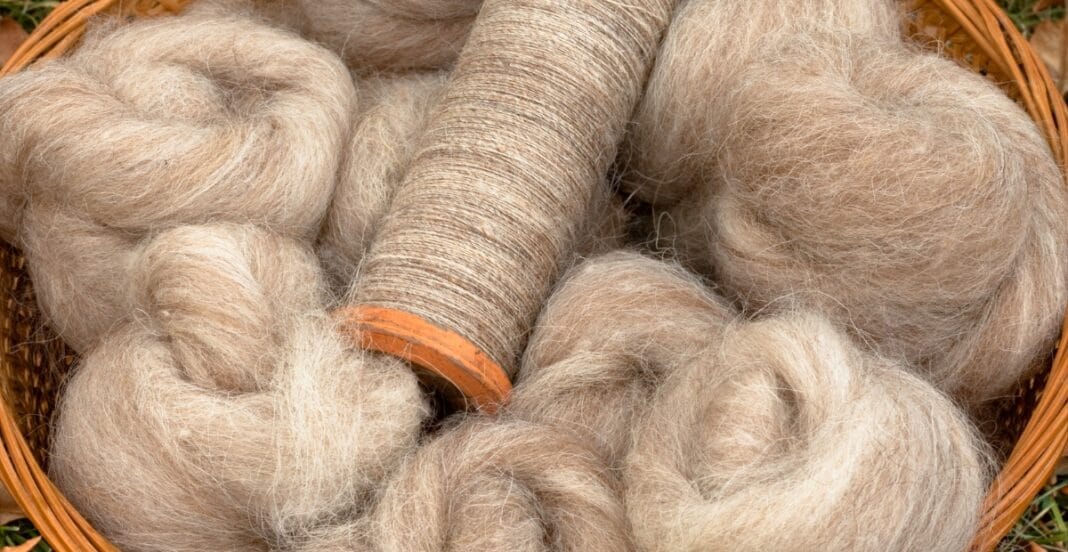Intro: Natural Fiber Fashion Benefits the Earth and Us
Natural fiber fashion: the eco-friendly choice is a new lifestyle option that helps everyone. People are slowly adding natural fiber garments to their clothing collection in this difficult time for the planet. Natural fibers are derived from plants and animals, which makes them a more sustainable alternative to synthetic fabrics and offer style as well as comfort. Natural fibers promote ethical manufacturing, have a slower decomposition rate, and use fewer chemicals. Today, people prefer looking good while still being eco-friendly. This shift in fashion helps bring cultures and economies together in the name of sustainability.
Table of contents
- Intro: Natural Fiber Fashion Benefits the Earth and Us
- The Definition of Natural Fibers: The Beginning of Eco-Friendly Fashion
- The Eco-Friendly Advantage: Natural Fibers vs. Synthetic Pollution
- Natural Fiber Fashion and Human Health: A Breath of Fresh Wear
- Sustainable Agriculture: How Natural Fibers Empower Farmers and Nature
- Fashion with Integrity: The Ethical Commitment Behind Natural Fibers
- Different Looks for Different Times: All Natural Fibers Fashion For Every Occasion
- Seasonal Adaptability: Natural Fibers can be Worn through out the year
- The Contribution of Natural Fiber Fashion to Climate Change Mitigation
- Natural Fiber Adaptation: The Marriage of Science and Heritage
- The Role of Influencers in Promoting Trendy Fashion from Natural Fibers
- Issues Relating to Natural Fiber Fashion and Their Answer
- Caring for Our Environment Through Circular Fashion and Natural Fibers
- Dressing in Natural Fibers: A Simple Guide to Getting Started
- Best Brands Leading the Natural Fiber Movement
- Caring for Natural Fiber Clothes: Maintenance Tips That Matter
- Creative DIY with Nature’s Threads: Personalize Your Eco-Friendliness
- The Expected Perspective: Natural Fiber Fashion Is Here to Stay
- Conclusion: Act Now By Embracing the Natural Fiber Fashion Commitment
- FAQs
The Definition of Natural Fibers: The Beginning of Eco-Friendly Fashion
Natural fiber fashion: the eco-friendly choice, starts with getting educated on the basic natural textiles. Examples of natural fibers are cotton, wool, silk, linen, and hemp which can all be obtained from renewable resources. Unlike synthetic fabrics which are made with petroleum, these natural fibers are abundant in nature, and after their use, can easily decompose back to nature. Less processing, means lesser pollution and energy consumption which is beneficial to the environment. Natural fibers provide a breathable and soft texture making them ideal for everyday outfits. Therefore, natural fiber fashion: the eco-friendly choice, offers comfort without harming the ecology, thus blending style with eco-sustainability.
The Eco-Friendly Advantage: Natural Fibers vs. Synthetic Pollution
Comparing natural fibers fashion and synthetic fashion, the first emerges as an environmentally friendly option. Unlike synthetics such as polyester and nylon, which take hundreds of years to degrade and release microplastics into oceans, natural fibers like cotton and wool degrade in mere months. Additionally, natural fibers are much kinder to the environment since they emit less greenhouse gas during production and use fewer toxic chemicals. Some fibers, like hemp and flax, even help replenish soils. Hence, natural fibers fashion: the eco-friendly choice, reduces waste, saves energy, and protects delicate ecosystems.
Natural Fiber Fashion and Human Health: A Breath of Fresh Wear
Natural fiber fashion: the eco-friendly choice is not only great for the environment but also for personal health. The moist, warm environment created by synthetic fibers often leads to discomfort along with skin irritations or even allergies. On the contrary, natural fibers offer breathability, moisture wicking, and skin ventilation. Organic cotton and bamboo are hypoallergenic and very soothing to sensitive skin. Thus, natural fiber fashion: the eco-friendly choice means wearing comfort and wellness.
Sustainable Agriculture: How Natural Fibers Empower Farmers and Nature
Natural fiber fashion: the eco-friendly choice not only helps the environment, but also supports farming communities. Organic farming avoids harmful pesticides, improves soil health, and reduces water usage, supporting crops like hemp, jute, and flax that grow quickly without irrigation and chemicals. Farmers growing natural fiber crops tend to experience improved soil health and crop yields. Thus, by choosing natural fiber fashion, consumers directly aid rural economic development which protects infrastructure and natural resources.
Fashion with Integrity: The Ethical Commitment Behind Natural Fibers
Natural fiber fashion: the eco-friendly choice promotes responsible business conduct in the fashion industry and supports ethical business practices. Brands prioritizing natural fibers often implement responsible sourcing, paying living wages, and ensuring safe workplaces. Unlike fast fashion companies that use exploitative labor and work without dignity, natural fiber-focused companies strive for humane practices and honesty. Shoppers can trust their purchases aid responsible supply chains. As a result, natural fiber fashion: the eco-friendly choice fosters a more compassionate fashion industry anchored in social responsibility and ecological care.
Different Looks for Different Times: All Natural Fibers Fashion For Every Occasion
Natural fiber fashion certainly spells out eco-friendliness and sustainability at the same time dive tailing effortless style. There are frocks for summer made out of organic cotton which are casual and easy to wear along with silk evening gowns which are exquisite. These fabrics have a lot of scope when it comes to creative designing. Modern designer always prefer to use natural fibers due to the luxurious feel they provide after dyeing, holding shape and easy to care lip. Even minimalist wardrobes benefit from the flexibility that basics made of linen or hemp offer.
Seasonal Adaptability: Natural Fibers can be Worn through out the year
Natural fiber fashion gives one look for chances to explore every season of the year without compromising comfort. During the summer, wearing cotton and linen is lightweight and comfortable; keeping the body dry and cool. Wool and alpaca are warm during winters and come without the bulk. These materials help maintain body temperature and reduce energy consumption for heating in cold weather while indoors. The shift makes it easy to embrace a multi functional minimalist wardrobe. Hence, natural fiber fashion: eco-friendly fashion for every region, month and time of the year.
The Contribution of Natural Fiber Fashion to Climate Change Mitigation
Natural fiber fashion: the eco-friendly choice, plays a key role in mitigating climate change impacts. The raising of natural fibers is less damaging to the environment than synthetic fiber’s natural cultivation. In addition, natural fibers such as cotton and hemp absorb carbon dioxide during their growth, actively mitigating emissions. The production of natural fibers is also a source of biodegradable materials that reduce landfill contributions and methane emissions. Thus, mindful production and responsible disposal of natural fiber fashion: the eco-friendly choice, stabilizes the climate while providing stylish and breathable clothing. This makes your clothing choices part of a global environmental contribution.
Natural Fiber Adaptation: The Marriage of Science and Heritage
Natural fiber fashion: the eco-friendly choice, undergoes adaptation with the aid of innovation and science. With improved comfort and performance, new blends like bamboo-linen and hemp-silk are crafted. Innovations include closed-loop dyeing systems, waterless fabric treatments, and finishes that make natural fibers more appealing and durable. Thus, natural fiber fashion: the eco-friendly choice, strives to meet contemporary lifestyle demands without abandoning its environmental values.
The Role of Influencers in Promoting Trendy Fashion from Natural Fibers
Because of influencer backing, natural fiber fashion is the eco-friendly choice and gaining momentum. Their trend-setting activities create habits that are good for the environment and help raise awareness. As trendsetters adopt natural fibers fashion: the eco-friendly choice, they encourage millions to reconsider their purchasing choices. Thanks to influencers, what is deemed stylish is changing fast, and natural materials are viewed as the new standard for stylishness, grace, social responsibility.
Issues Relating to Natural Fiber Fashion and Their Answer
Natural fiber fashion is the eco-friendly choice. It does come with some challenges. Some natural fabrics are expensive due to organic farming and ethical labor. Some areas also have limited availability, which slows widespread adoption. However, the emerging innovation that meets consumer demand is increasing supply, making these goods more affordable over time. Organic farming and sustainable textiles have become subsidized by many governments. These measures will actively support the natural fibers fashion industry, making it accessible for the average consumer in the near future.
Caring for Our Environment Through Circular Fashion and Natural Fibers
Natural fibers breakdown eco-efficiently and can be composted post-use, making them a great option for eco-friendly fashion. Further, upcycling old garments made of natural fibers lessens environmental impact. Through this regenerative loop, sustainable natural fibers fashion accelerates the circular economy model towards achieving a zero-waste future.
Dressing in Natural Fibers: A Simple Guide to Getting Started
Eco-friendly fashion begins with simple changes, such as the addition of organic cotton tees or linen trousers. Over time, replace worn-out synthetic staple items with high-quality alternatives, shopping secondhand, or ethical brands. Be on the lookout for fabric labels with certifications like GOTS or OEKO-TEX. Step by step, your wardrobe will inspire you to live sustainably through natural fibers.
Best Brands Leading the Natural Fiber Movement
Natural fiber fashion is a movement that many brands are adopting, for example, Patagonia, Eileen Fisher, and People Tree. These brands offer ethical fashion, transparency, sustainability, and timeless designs while using organic cotton, wool, and hemp. Of course, there are also local artisans and cooperatives that sell unique handwoven pieces or creations. Supporting estos pioneers guarantees that natural fibers fashion continues to thrive and inspire everyone.
Caring for Natural Fiber Clothes: Maintenance Tips That Matter
Like any other fashion piece, natural fiber clothes has a unique way in which they must be taken care of for them to last longer. Do not iron on low settings and instead use breathable bags for storage to prevent mildew. Regular upkeep leads to reduced waste and preserved garments. With the right approach, style and longevity can work hand in hand through careful maintenance.
Creative DIY with Nature’s Threads: Personalize Your Eco-Friendliness
Fashion from natural fibers: the nature-friendly option, encourages creativity through DIY projects. Transform old clothes into bags, pillows, or patchwork skirts. Try dyeing with natural colors like turmeric or indigo for a truly personal touch. Such practices help foster eco-positive values and curb clothing waste. In addition, they enhance sentimental value to your clothes. Embrace fashion from natural fibers: the nature-friendly option, as both an artistic and moral endeavor.
The Expected Perspective: Natural Fiber Fashion Is Here to Stay
Natural fiber fashion: the eco-friendly choice will remain in demand as people become more environmentally conscious. The younger population requires ethics, sustainability, and responsibility behind the brands they purchase from. As technology improves and production costs decrease, more people will be able to buy eco-friendly clothes. All in all, natural fibers fashion: the eco-friendly choice remains a positive opportunity for everyone to hope toward a sustainable, equitable future.
Conclusion: Act Now By Embracing the Natural Fiber Fashion Commitment
Natural fiber fashion: the eco-friendly choice is not just about garments, it is a mindful lifestyle decision that supports the planet. With every purchase, you also support health, ethics, biodiversity, and innovation while sending a message to the fashion world that sustainability is a priority. Make the shift now. Let natural fibers fashion: the eco-friendly choice be your spokesperson as you live for change, comfort, and a responsible embrace of life.
FAQs
Natural fiber fashion uses materials like cotton, hemp, silk, and linen. These biodegradable, renewable fibers require fewer chemicals and energy to produce, making them a sustainable alternative to synthetic fabrics.
Natural fibers include cotton, linen, hemp, jute, wool, silk, and bamboo. These come from plants or animals and decompose naturally, leaving minimal environmental impact.
Natural fiber fashion supports soil health, reduces chemical runoff, lowers carbon emissions, and cuts microplastic pollution, all while being biodegradable.
Yes, it is. Light fabrics like cotton and linen are ideal for summer, while wool and alpaca keep you warm in winter. Natural fibers regulate body temperature efficiently.


